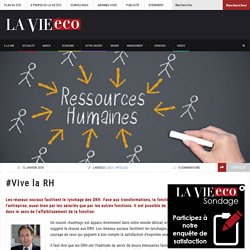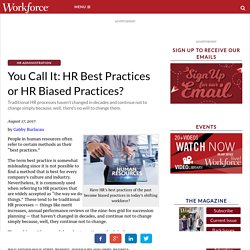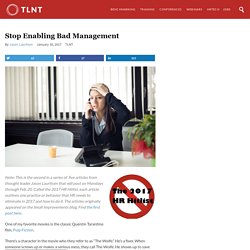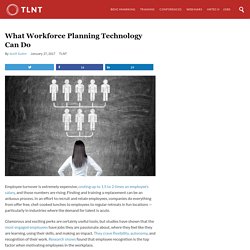

#Vive la RH. Les réseaux sociaux facilitent le lynchage des DRH.

Face aux transformations, la fonction RH n’est pas la plus prisée dans l’entreprise, aussi bien par les salariés que par les autres fonctions. Il est possible de reprendre confiance car tout ne va pas dans le sens de l’affaiblissement de la fonction. Maurice Thévénet Co-fondateur d’Holodis, ancien directeur de l’ESSEC et Président de l’AGRH (Association francophone de gestion des ressources humaines)à l’ESSEC Un nouvel «hashtag» est apparu récemment dans notre monde délicat, entre «Paris2024» et «balancetonporc»: il suggère la chasse aux DRH. At year's end, don't forget to update your job descriptions.
Recrutement : si on mettait fin aux intitulés de poste qui ne veulent rien dire. Doper l’engagement des salariés et recruter de nouveaux collaborateurs : comment choisir entre des intitulés de poste poussiéreux ou trop créatifs ?

Recrutement : des intitulés de postes qui ne donnent pas envie Il faut l’admettre, les intitulés de postes suscitent souvent peu d’enthousiasme, que ce soit pour un collaborateur interne ou pour attirer un candidat dans l’entreprise. Ils font pour cela appel à des référentiels métiers internes à chaque entreprise, souvent obsolètes avant même d’être finalisés. You Call It: HR Best Practices or HR Biased Practices? – Workforce Magazine. HR Administration Traditional HR processes haven’t changed in decades and continue not to change simply because, well, there's no will to change them.

Have HR’s best practices of the past become biased practices in today’s shifting workforce? People in human resources often refer to certain methods as their “best practices.” The term best practice is somewhat misleading since it is not possible to find a method that is best for every company’s culture and industry. Nevertheless, it is commonly used when referring to HR practices that are widely accepted as “the way we do things.” The problem with many of these best practice methods is they were designed for a workforce that looked different in the past than it does today. At that time the norm for these individuals was to pursue other life goals that weren’t necessarily compatible with a traditional career.
But what if your pain points were hidden beneath the surface? Chances are this is happening in your company to some degree. Saved—Or Sunk—By the Job Description? Meaningless Core Values - A Dangerous Liability. Does your company have a set of values that guides every decision that is made – from the way employees interact with clients to the types of products you sell?

Perhaps you have a set of values, but does everyone know what they are and what it means to live those values every day? Meaningless or nonexistent corporate values can be a huge risk for companies, especially in today’s political climate. Daniel Korschun, associate professor of marketing at Drexel University, wrote an interesting Salon piece about what happens when corporate brands violate consumer expectations. He writes: Consumers today form relationships with a company based not only on the quality of the products and services it sells but also on a set of expectations of how it should comport itself (see also here). Not only do corporate values guide the actions of consumers (in real time, as we saw last month with the Lyft/Uber debacle), but they are also imperative when it comes to attracting talent. Sarah Payne (112 Posts) How and When to Do a Job Description Review. Stop Enabling Bad Management. Note: This is the second in a series of five articles from thought leader Jason Lauritsen that will post on Mondays through Feb. 20.

Called the 2017 HR Hitlist, each article outlines one practice or behavior that HR needs to eliminate in 2017 and how to do it. The articles originally appeared on the Small Improvements blog. Find the first post here. One of my favorite movies is the classic Quentin Tarantino film, Pulp Fiction. There’s a character in the movie who they refer to as “The Wolfe.” Disappear. I think this is how management often thinks of HR — as their own personal version of “The Wolfe.” Wrong. Here’s the problem: “The Wolfe” in Pulp Fiction is not a good guy. When HR swoops in like The Wolfe to take over for a manager in uncomfortable conversations, we enable bad behavior. Should You Use a Job Description Template? What Workforce Planning Technology Can Do. Employee turnover is extremely expensive, costing up to 1.5 to 2 times an employee’s salary, and those numbers are rising.

Finding and training a replacement can be an arduous process. In an effort to recruit and retain employees, companies do everything from offer free, chef-cooked lunches to employees to regular retreats in fun locations — particularly in industries where the demand for talent is acute. Glamorous and exciting perks are certainly useful tools, but studies have shown that the most engaged employees have jobs they are passionate about, where they feel like they are learning, using their skills, and making an impact. They crave flexibility, autonomy, and recognition of their work. Research shows found that employee recognition is the top factor when motivating employees in the workplace. Planning makes a difference One of the best investments organizations can make toward improving employee satisfaction is in workforce planning technology and process improvements.